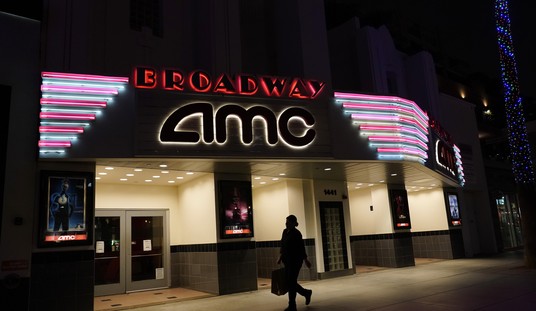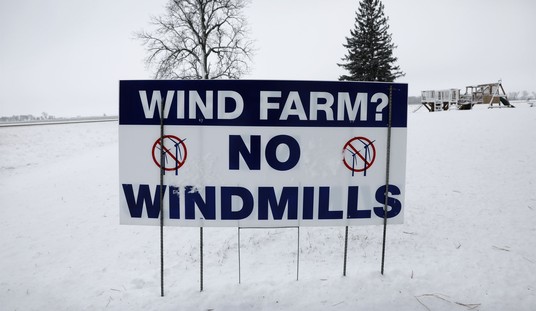George Will has a column today bout a magnet school in Philadelphia which, until very recently, was considered one of the top schools in the city and in the country. But like other top schools the Julia R. Masterman Laboratory and Demonstration School was deemed insufficiently diverse and in need of more equity.
In September 2010, President Barack Obama came here to the nationally acclaimed and locally revered Masterman School, one of this city’s five selective magnet schools. He called the “culture of excellence that you promote at Masterman” an example “that I hope communities across America can embrace.” Today, Philadelphia no longer can embrace it.
According to a meticulous 51-page report written by a multiracial group of Masterman parents, the school is being “systematically dismantled.” It is being sacrificed on the DEI (“diversity, equity, inclusion”) altar. For decades, it and other selective schools coexisted with neighborhood schools in educating the city’s children. Admission to the selective schools was by merit: grades, scores on Pennsylvania’s standardized test and attendance records.
These metrics produced the excellence Obama praised, but not the racial composition of the student bodies that progressives fancy. They chose to diminish excellence in the pursuit of equity, understood, in this age of identity politics, as student enrollments at the selective schools reflecting the school district’s racial composition.
The report acknowledges that the goal of the changes made at Masterman were intended to improve the admission of Black and “Latinx” students by lowering standards and removing the competitive admissions system and replacing it with a lottery. However the graphs provided in the report show the hoped for improvement hasn’t really happened.
Although the student body was diverse in many ways, in the most recent decade it lacked an appropriate proportion of Black and Brown students. During the 2020–2021 school year, a new admissions process was put into place as a first-line remedy, and found some real success in increasing the number of Black students entering 5th grade and 9th grade in Fall 2021.
With the randomized process carried out in 2021–2022, that improvement was lost. There was no significant increase in diversity; indeed, for some minority groups, access was reduced. In addition, following the first round of randomized admissions, data shows that the students who entered fifth, sixth, and ninth grades were markedly less prepared for the accelerated curriculum than earlier classes.
During the same time as the school was adjusting to new need for wider differentiation within the classroom, other elements of curriculum appear to have been diminished. These include availability of world language instruction, accelerated math pathways, and enriching electives. These changes compound the sense on the part of students and parents that Masterman’s essential mission of advanced learning has been intentionally abandoned.
The proportion of Black and Hispanic students has changed slightly but what has changed most is the end of the advanced curriculum. Students used to be expected to take multiple years of French and Spanish. All students used to take an advanced math track with the exception of a few who took an even more advanced track. Now the school is accepting a lot more students who need remedial help in math and reading with no additional funding for teachers to cover this extra workload. The frustration of the authors of the report comes through in questions posed to the school district. These questions appear on page 29:
- While the District is currently focused on improving academic achievement throughout the city, the future of students who have consistently demonstrated academic excellence is left to a gamble. What are the educational and societal implications of leaving to chance high performing students’ access to academic programs that are the right academic fit for them?
- The district and the school are focused on raising standards for students who are lagging, while the aspirations and needs of students who excel academically and need an advanced curriculum are not met. Will the district leadership provide resources to address both types of students?
The report concludes:
Masterman has been the saving grace of many a student (who might proudly self-designate as “nerd”) starving for learning and intellectual kinship, who finds herself out of place, bored, ostracized, and even bullied in other schools; it has been a place of welcome, and acceptance for many a child of immigrants who is immensely talented but lacks connection; it has stood as a sign, along with few others, that even in a city and a school system with innumerable challenges and tragic failures, students can flourish under the right conditions. But, we need to understand, learn from, and build on the experiences that engenders those conditions; not forget and squander them in a rush to reform.
In other words, the current push for equity is in danger of ruining a good school, quite literally one of the best in the entire state.
Looking back, there’s no real mystery how all of this happened. In 2020, after the murder of George Floyd, someone started an Instagram account called Black@Materman to which people could anonymously report incidents of racism at the school, both past and present. That led to protests and demands for change.
The plan for more equity at Masterman is the same one we see playing out at other top schools like Lowell High School in San Francisco, which also went from a competitive admissions process to a lottery system (thanks to votes from members of the school board who said explicitly that “meritocracy” was a racist system). The results of these changes were entirely predictable. Lowell went from being one of the top high schools in the country to not making the list of the top 100 high schools. Lowell has returned to merit based admissions thanks to a brand new school board but it’s not clear if it will return to the list of top schools. It’s easier to break things than it is to build them.
Thomas Jefferson High School for Science and Technology in Fairfax, Virginia has also recently moved from merit based admissions to a more “holistic” system designed to increase equity.
Early in its history, TJ was majority White; in more recent years, it has become majority Asian, with a significant White contingent. (The 2019-2020 student body was 70 percent Asian and 20 percent White.)
Discontent over the demographics of the student body at TJ has been simmering for years, especially among Black and Hispanic residents of Fairfax County. But it burst into public view this summer following the nationwide protests over the killing of George Floyd and against systemic racism. Those demonstrations coincided with Fairfax’s publication of data for TJ’s Class of 2024, which revealed that fewer than 10 Black students had been admitted.
It should go without saying that I’d be happy to see more Black and Hispanic students admitted to these schools but not at the expense of watering down their excellence for everyone. The solution isn’t to make admissions requirements easier it’s to make preparation better, especially among groups that are lagging. There are lots of different views about how to accomplish that but the bottom line is that kids who can’t read or do math at grade level don’t belong at schools designed for outstanding students.








Join the conversation as a VIP Member